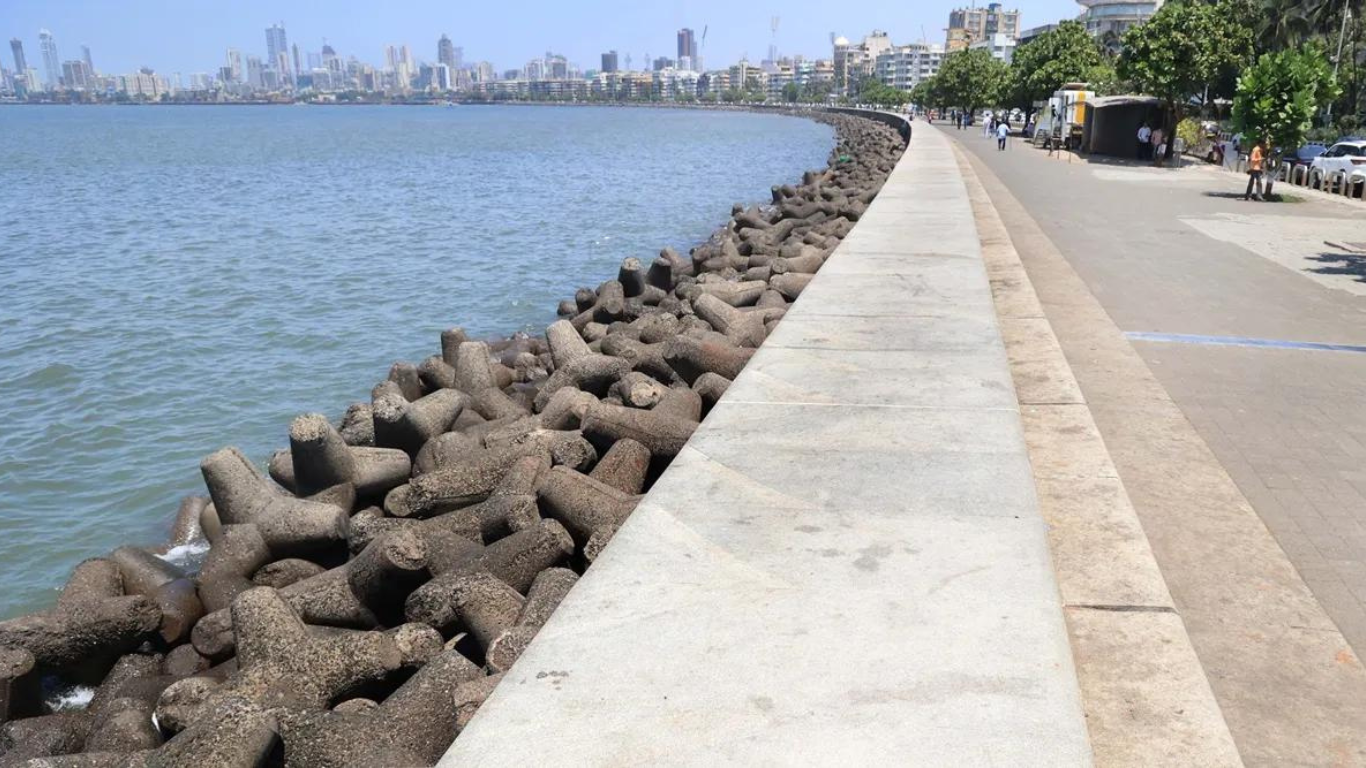Introduction
Mumbai, India’s bustling financial capital, is not only known for its skyscrapers and bustling streets but also for its unique water management challenges. With a population exceeding 20 million, maintaining an adequate water supply is crucial for the city. This article dives deep into the factors affecting Mumbai water level, from historical context to future projections, and explores how the city is coping with these challenges.
Historical Context of Mumbai’s Water Levels
Pre-Independence Water Management
Mumbai’s water management efforts date back to the British colonial era when the need for a consistent water supply became apparent. The construction of Vihar Lake in the mid-19th century marked the beginning of structured water storage and distribution in the city.
Post-Independence Developments
Post-independence, Mumbai saw the development of several major water projects, including the creation of Tulsi and Powai Lakes, and the ambitious Bhatsa Dam project, which aimed to secure water for the city’s growing population. These developments laid the foundation for modern water management in Mumbai.
Geographical Factors Influencing Mumbai’s Water Level
Monsoons and Rainfall Patterns
Mumbai’s water level are heavily influenced by the monsoon season, which typically runs from June to September. The city receives an average annual rainfall of around 2,200 mm, most of which occurs during this period. The intensity and distribution of monsoon rains directly impact the water levels in the city’s lakes and reservoirs.
River Systems and Catchment Areas
Mumbai’s rivers, including the Mithi, Dahisar, and Poisar, play a significant role in replenishing its water bodies. The catchment areas of these rivers are vital for collecting rainwater that feeds into the city’s reservoirs.
Coastal Influence
Being a coastal city, Mumbai is also affected by tidal patterns and sea-level changes. While the sea does not directly contribute to the potable water supply, it influences groundwater levels and the overall hydrological balance.
Sources of Water Supply in Mumbai
Lakes and Reservoirs
Mumbai relies on a network of lakes and reservoirs, including Vihar, Tulsi, and Powai Lakes, as well as the Bhatsa Dam, for its water supply. These sources are primarily rain-fed and are crucial for storing water during the monsoon season to last through the dry months.
Rivers
The rivers flowing through Mumbai contribute to the city’s water table and are essential for groundwater recharge. They also serve as natural drainage systems during the monsoon.
Groundwater
Groundwater serves as a supplementary source of water, especially in areas not adequately covered by the municipal supply. However, over-extraction and contamination are ongoing concerns.
Major Water Bodies in Mumbai
Vihar Lake
Vihar Lake, constructed in 1860, was Mumbai’s first major water supply project. It is located within the Sanjay Gandhi National Park and has a capacity of approximately 27,000 million liters.
Tulsi Lake
Tulsi Lake, another critical water source within Sanjay Gandhi National Park, was constructed in 1879. It has a capacity of about 8,000 million liters and primarily serves the southern part of the city.
Powai Lake
Powai Lake, although not used for potable water, is significant for its role in the city’s ecosystem. Constructed in 1891, it supports biodiversity and recreational activities.
Bhatsa Dam
The Bhatsa Dam, located outside Mumbai, is a major source of water for the city. It has a massive storage capacity and is integral to meeting Mumbai’s water demand.
Current Status of Mumbai’s Water Levels
Seasonal Variations
Mumbai’s water levels fluctuate significantly with the seasons. During the monsoon, reservoirs are replenished, while in the summer months, water levels can drop dramatically, leading to potential shortages.
Daily Monitoring Practices
The Brihanmumbai Municipal Corporation (BMC) monitors water levels daily, providing updates to ensure efficient management and distribution. This real-time data helps in making informed decisions about water usage and conservation.
Reporting and Transparency
Transparency in reporting water levels is crucial for maintaining public trust and ensuring accountability. The BMC regularly publishes water level reports and updates through various channels.
Impact of Climate Change on Water Levels
Rising Temperatures
Climate change has led to rising temperatures, increasing evaporation rates from lakes and reservoirs. This trend poses a significant challenge to maintaining adequate water levels.
Changing Rainfall Patterns
Unpredictable rainfall patterns, including delayed monsoons and heavy downpours in short periods, complicate water management efforts. These changes can lead to either droughts or floods, both of which strain the water supply system.
Sea-Level Rise
Rising sea levels threaten Mumbai’s coastal areas, potentially leading to saltwater intrusion into freshwater sources. This intrusion can contaminate drinking water supplies, exacerbating the city’s water challenges.
Challenges in Water Management
Population Growth
Mumbai’s burgeoning population puts immense pressure on its water supply. The city’s infrastructure must continually expand to meet the growing demand, a task that is both challenging and costly.
Infrastructure Limitations
Aging infrastructure, including old pipelines and storage systems, often leads to water loss through leaks and inefficient distribution. Upgrading and maintaining this infrastructure is a significant challenge.
Pollution and Contamination
Industrial and domestic pollution, coupled with inadequate waste management, contaminates water bodies. Ensuring clean water supply requires robust measures to prevent and control pollution.
Government Initiatives and Policies
Water Conservation Measures
The government has launched several initiatives aimed at water conservation, including rainwater harvesting mandates for new buildings and public awareness campaigns to promote water-saving practices.
Infrastructure Projects
Major infrastructure projects, such as the construction of new reservoirs and the upgrading of existing water supply systems, are underway to improve water management and distribution.
Policy Framework
A comprehensive policy framework guides Mumbai’s water management efforts. Policies focus on sustainable use, equitable distribution, and the integration of modern technologies to enhance efficiency.
Community Involvement and Public Awareness
Importance of Public Participation
Community involvement is crucial for effective water management. Public participation ensures better implementation of conservation measures and fosters a sense of ownership among residents.
Successful Community Projects
Several community-led projects, such as local rainwater harvesting systems and neighborhood water audits, have successfully contributed to water conservation efforts in Mumbai.
Awareness Campaigns
Awareness campaigns play a vital role in educating the public about water conservation. These campaigns encourage residents to adopt water-saving habits and participate in community initiatives.
Technological Innovations in Water Management
Advanced Monitoring Systems
Technological advancements, such as IoT-based water monitoring systems, provide real-time data on water levels, helping authorities manage resources more effectively.
Sustainable Water Treatment Solutions
Innovative water treatment solutions, including desalination and advanced filtration technologies, are being explored to enhance the quality and availability of water.
Smart City Initiatives
Mumbai’s integration into the Smart City framework includes several water management initiatives aimed at improving efficiency through technology and data-driven decision-making.
Future Projections and Planning
Predicted Changes in Water Levels
Future projections indicate fluctuating water levels due to climate change and population growth. Planning for these changes is essential to ensure a sustainable water supply.
Long-Term Sustainability Plans
Long-term plans focus on sustainable water management practices, including increased storage capacity, improved distribution systems, and robust conservation measures.
Emergency Preparedness
Preparedness for water-related emergencies, such as droughts and floods, involves creating comprehensive response plans and ensuring adequate resources are available to manage crises.
Case Studies
Successful Water Management in Other Cities
Examining successful water management practices in other cities can provide valuable insights. Cities like Singapore and Cape Town offer lessons in sustainable water management that Mumbai can adapt.
Lessons Learned
Learning from past challenges and successes is crucial for improving Mumbai’s water management strategies. Continuous evaluation and adaptation are key to overcoming future challenges.
Tips for Residents
Water Conservation at Home
Residents can contribute to water conservation by adopting simple practices such as fixing leaks, using water-efficient appliances, and harvesting rainwater.
How to Stay Informed
Staying informed about water levels and conservation measures is essential. Residents can follow updates from the BMC and participate in local awareness programs.
Participating in Community Efforts
Active participation in community water conservation projects and initiatives can make a significant impact. Collaboration between residents and authorities is crucial for success.
Conclusion
Mumbai’s water management is a complex but critical task. From historical efforts to modern challenges, the city continues to strive for a sustainable water supply. With technological advancements, community involvement, and effective government policies, Mumbai can navigate its water challenges and secure a better future.
FAQs
What are the major sources of water for Mumbai?
Mumbai’s water sources include lakes like Vihar, Tulsi, and Powai, the Bhatsa Dam, and several rivers. Groundwater also serves as a supplementary source.
How does the monsoon affect Mumbai’s water levels?
The monsoon season significantly impacts Mumbai’s water levels, replenishing lakes and reservoirs. Adequate rainfall during this period is crucial for maintaining water supply throughout the year.
What are the main challenges in managing Mumbai’s water supply?
Major challenges include population growth, aging infrastructure, pollution, and the impacts of climate change, such as unpredictable rainfall patterns and rising temperatures.
How can residents contribute to water conservation?
Residents can conserve water by fixing leaks, using water-efficient appliances, harvesting rainwater, and participating in community conservation projects and awareness campaigns.
What are the future projections for Mumbai’s water levels?
Future projections indicate fluctuations in water levels due to climate change and population growth. Sustainable water management practices and long-term planning are essential to address these challenges.




